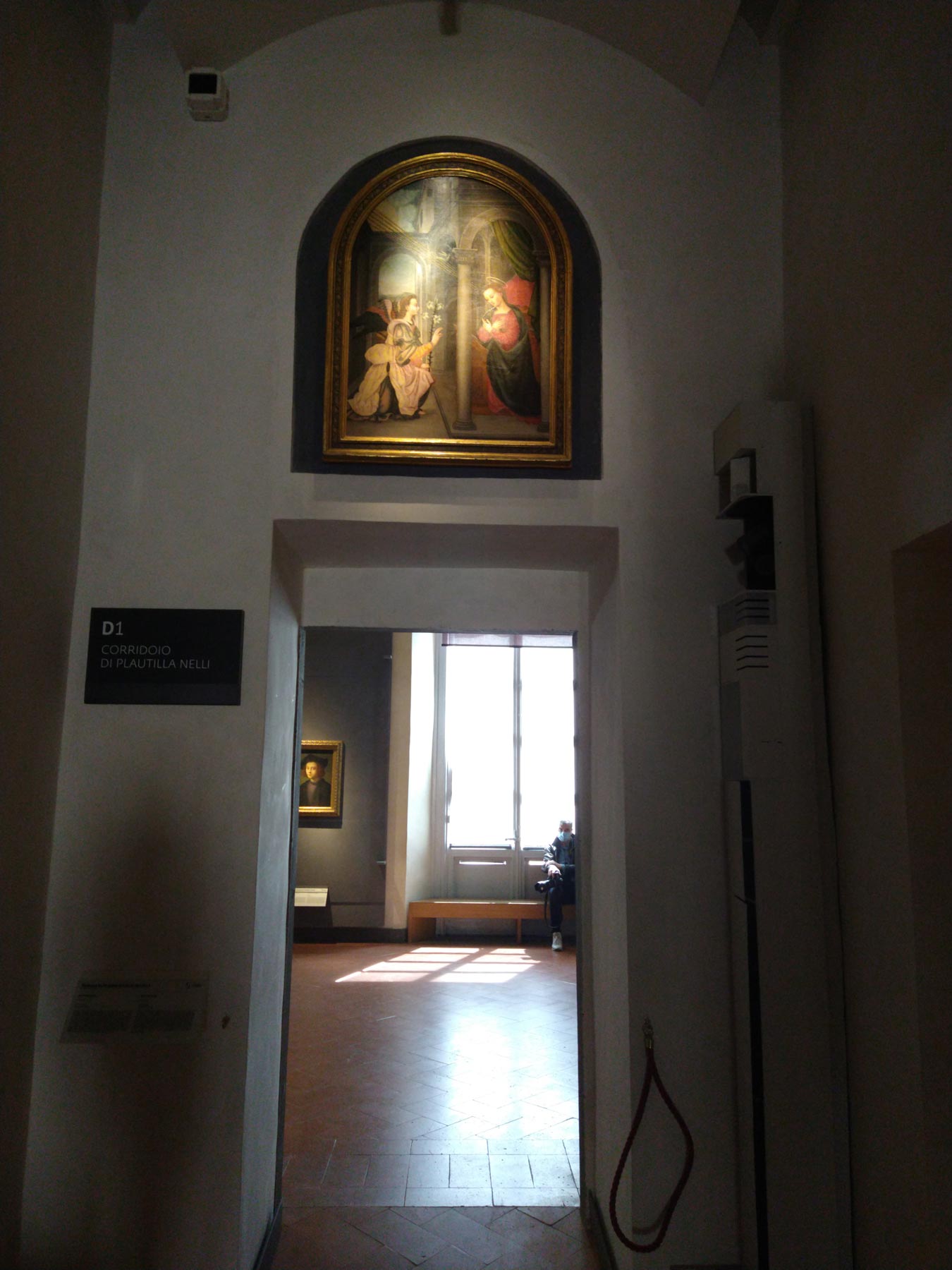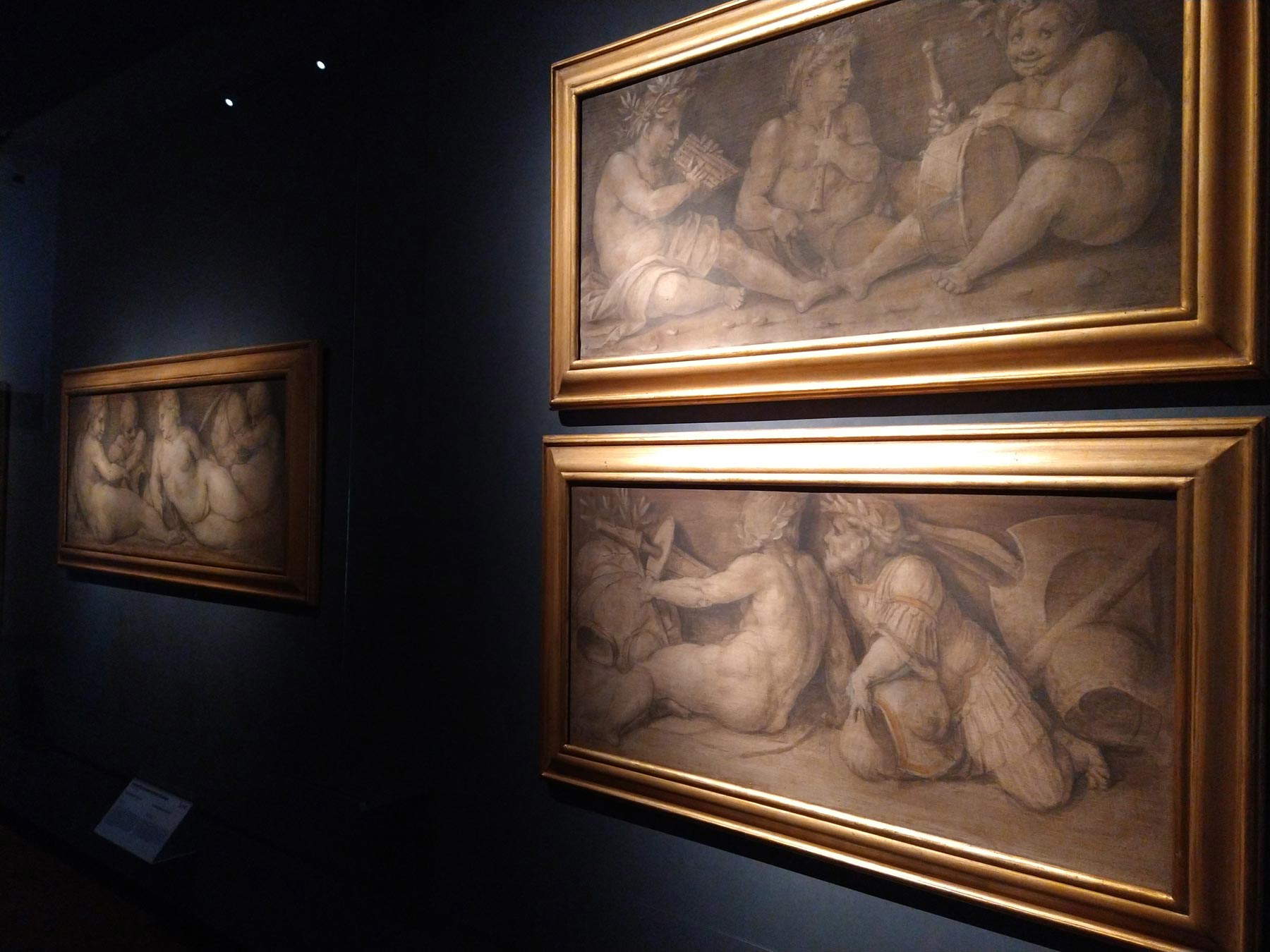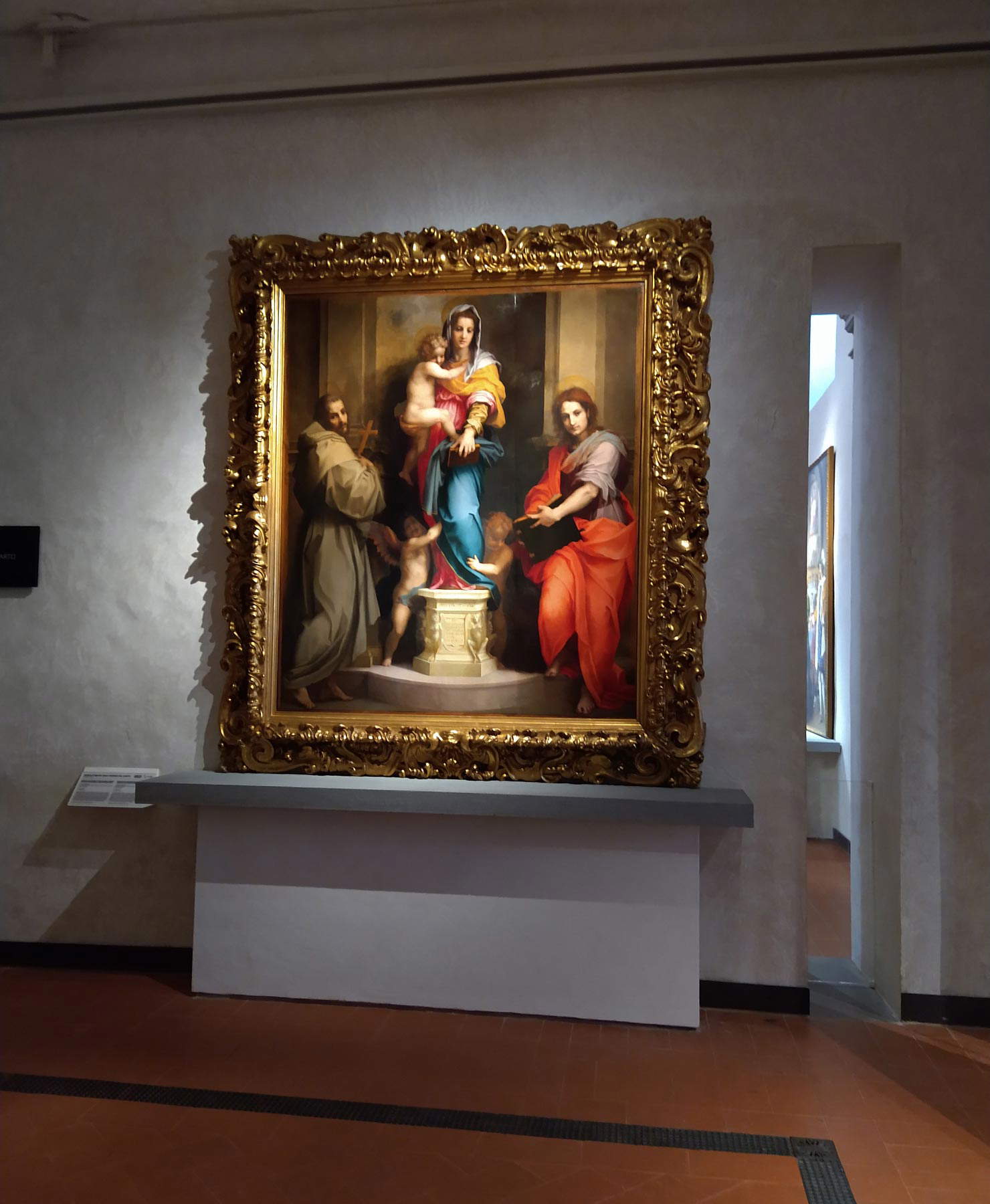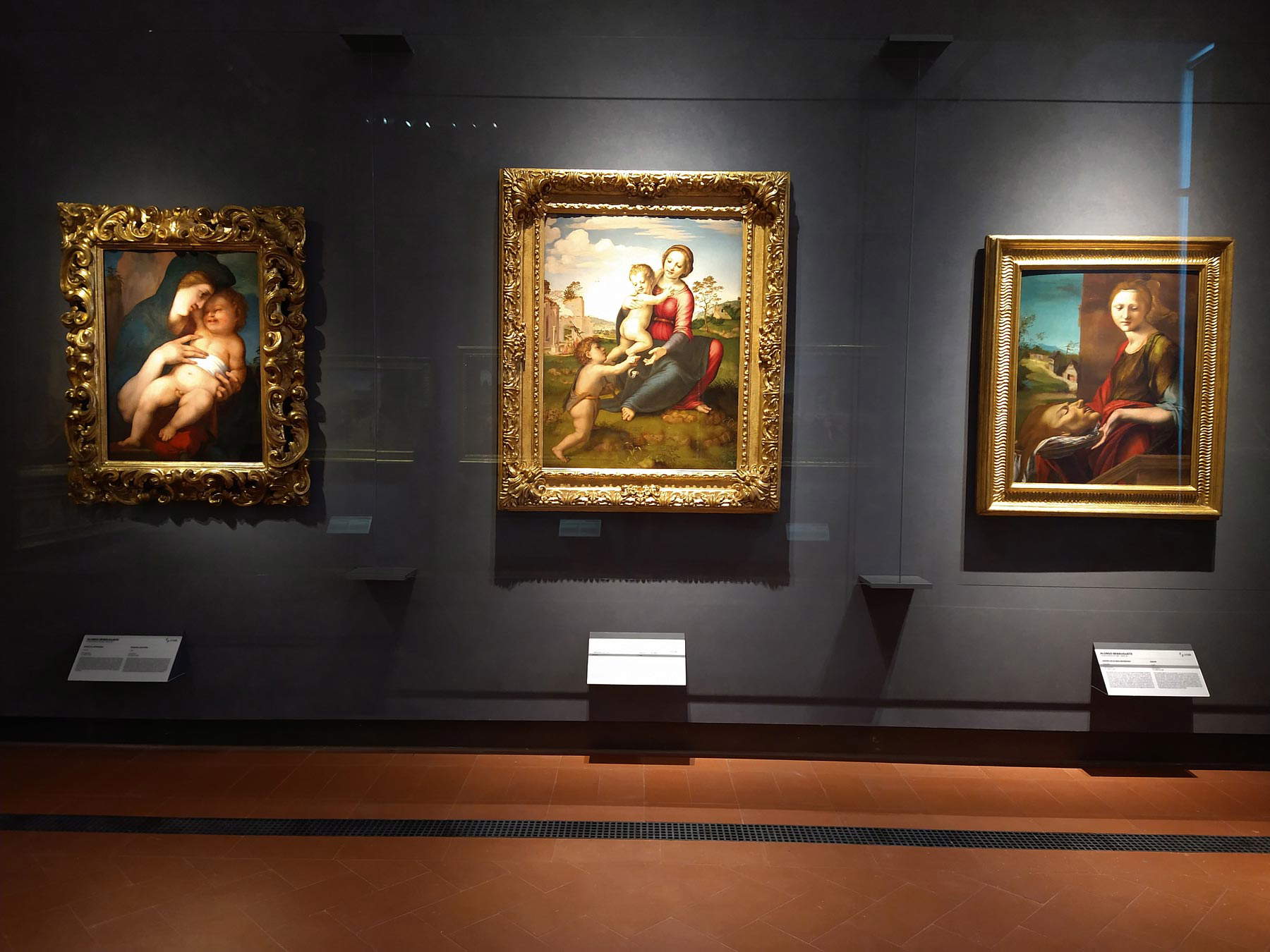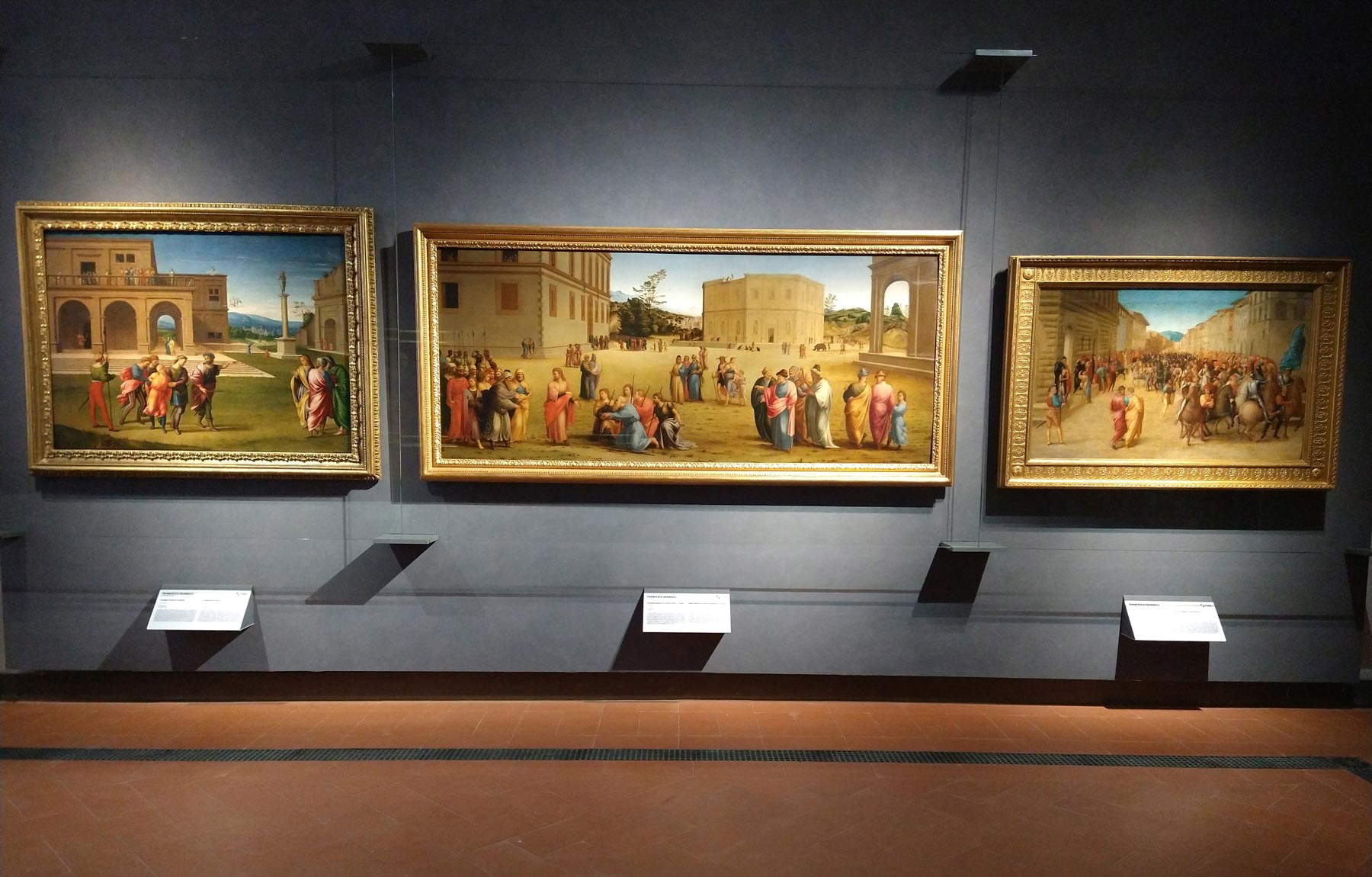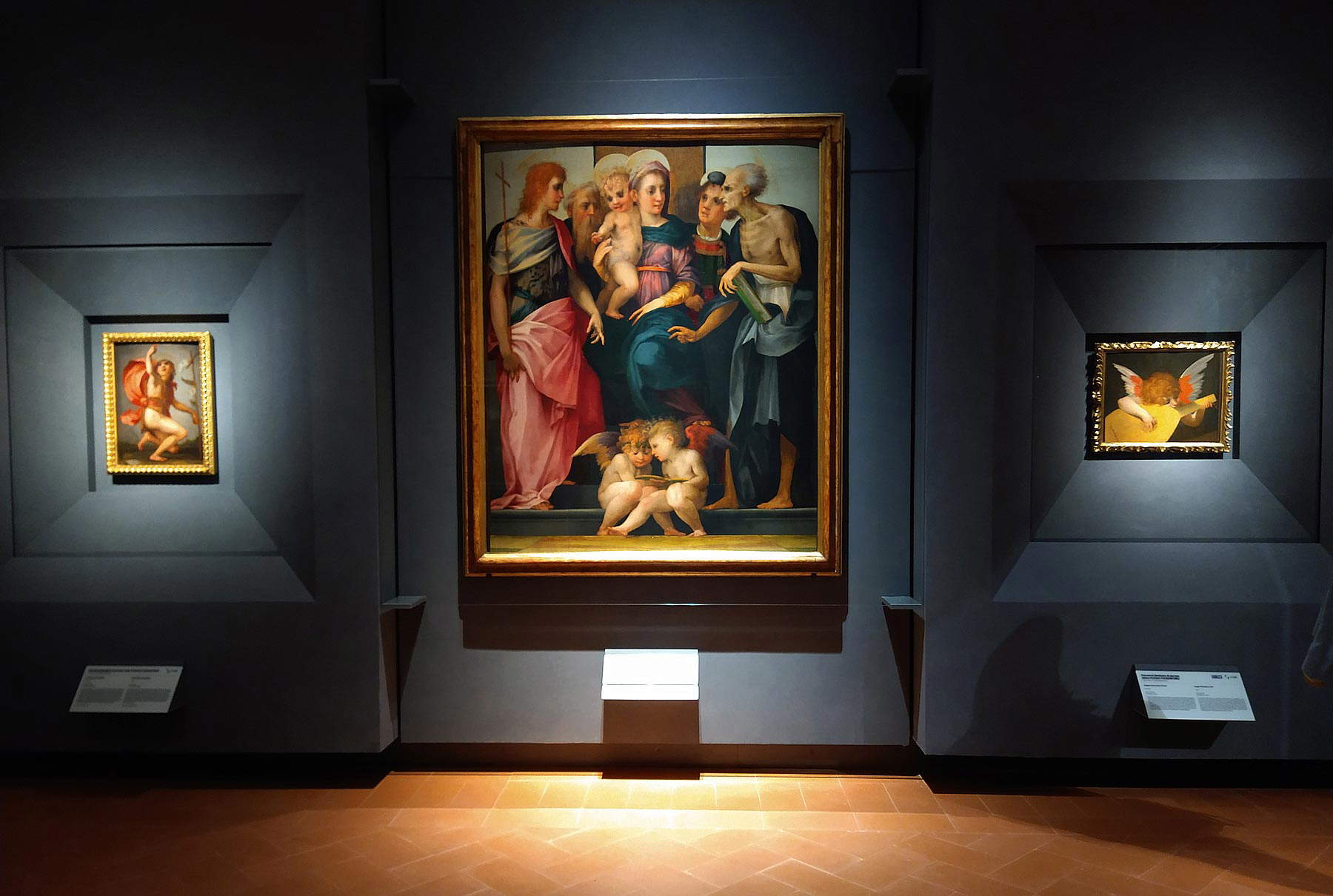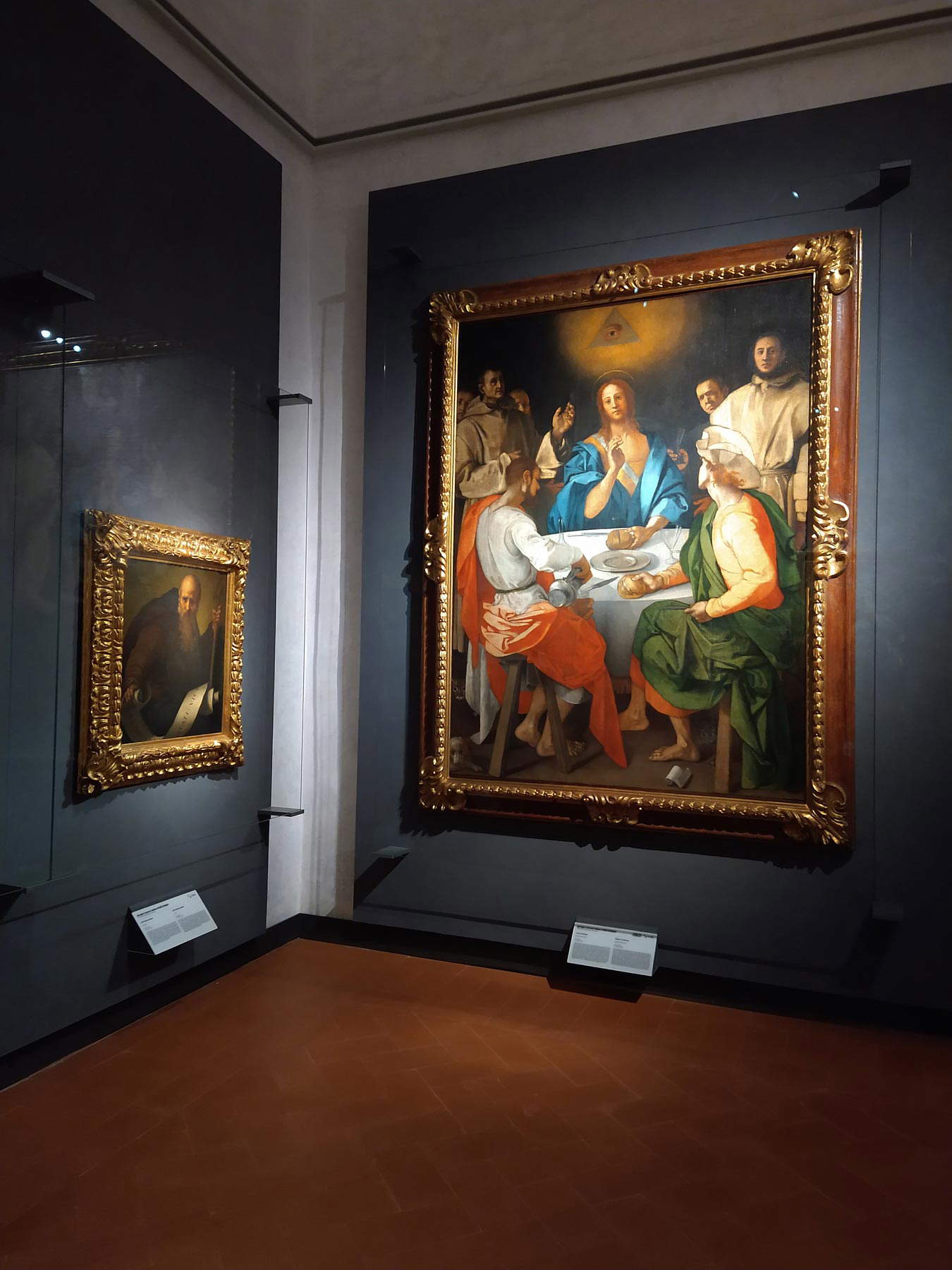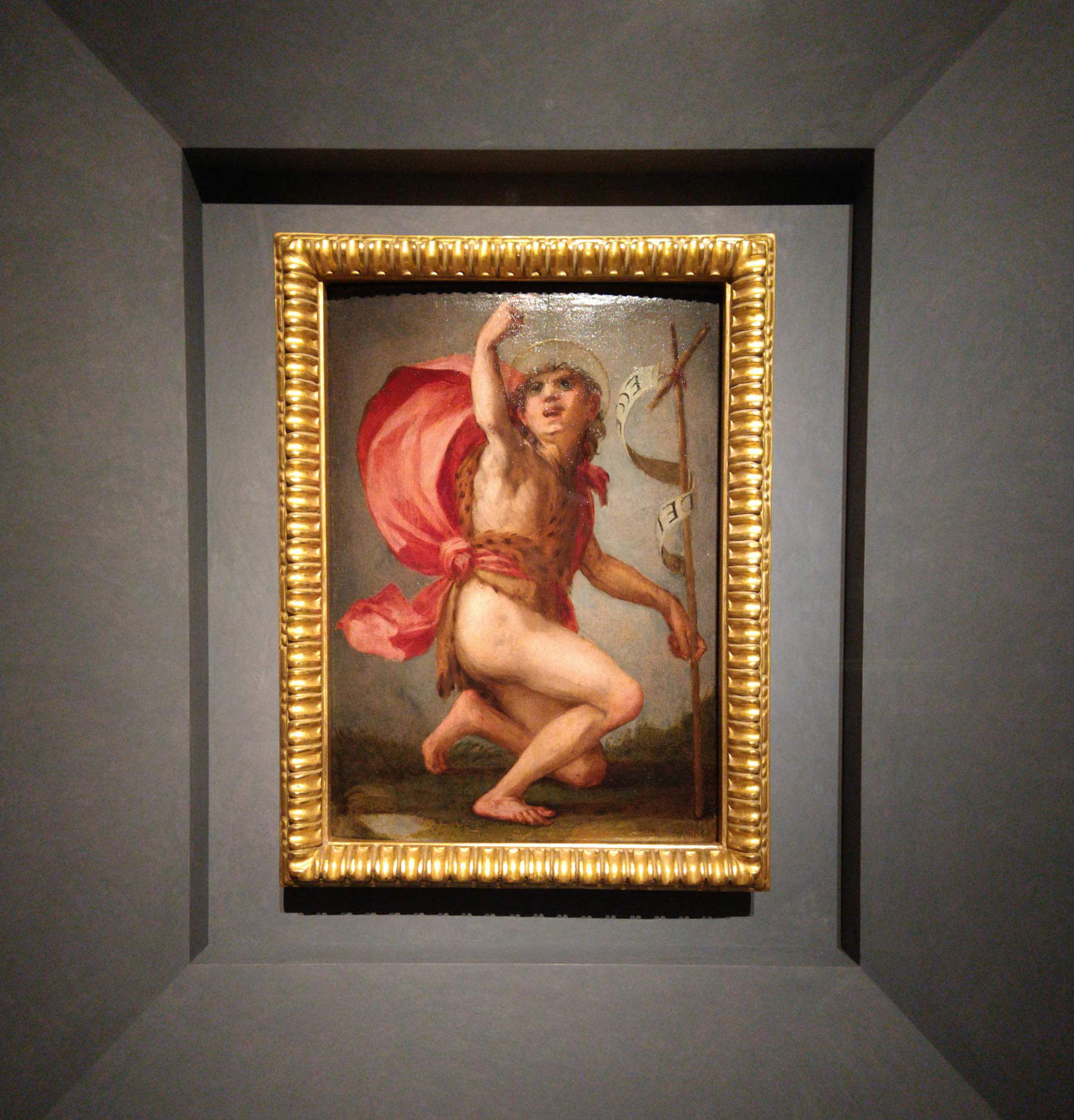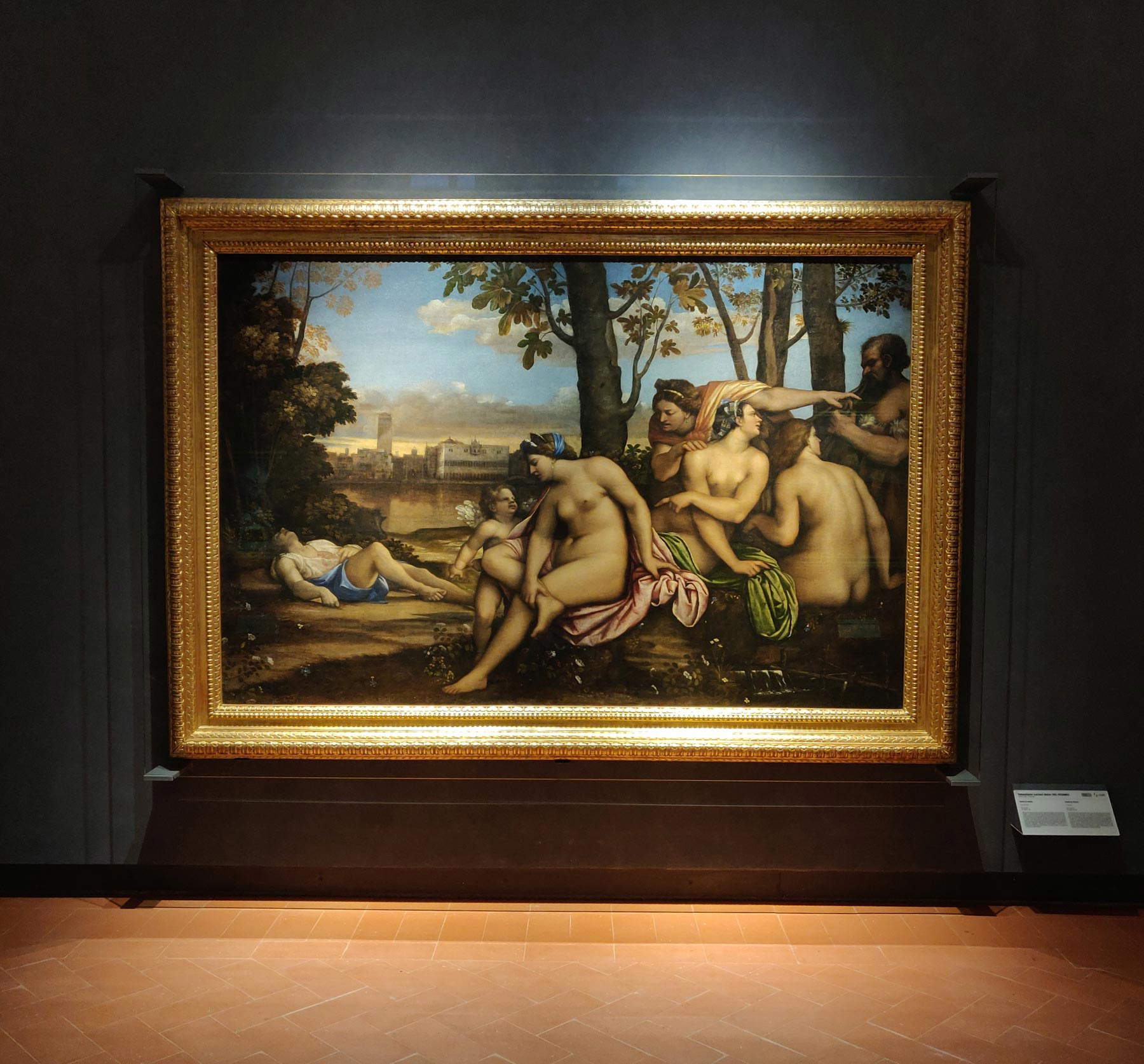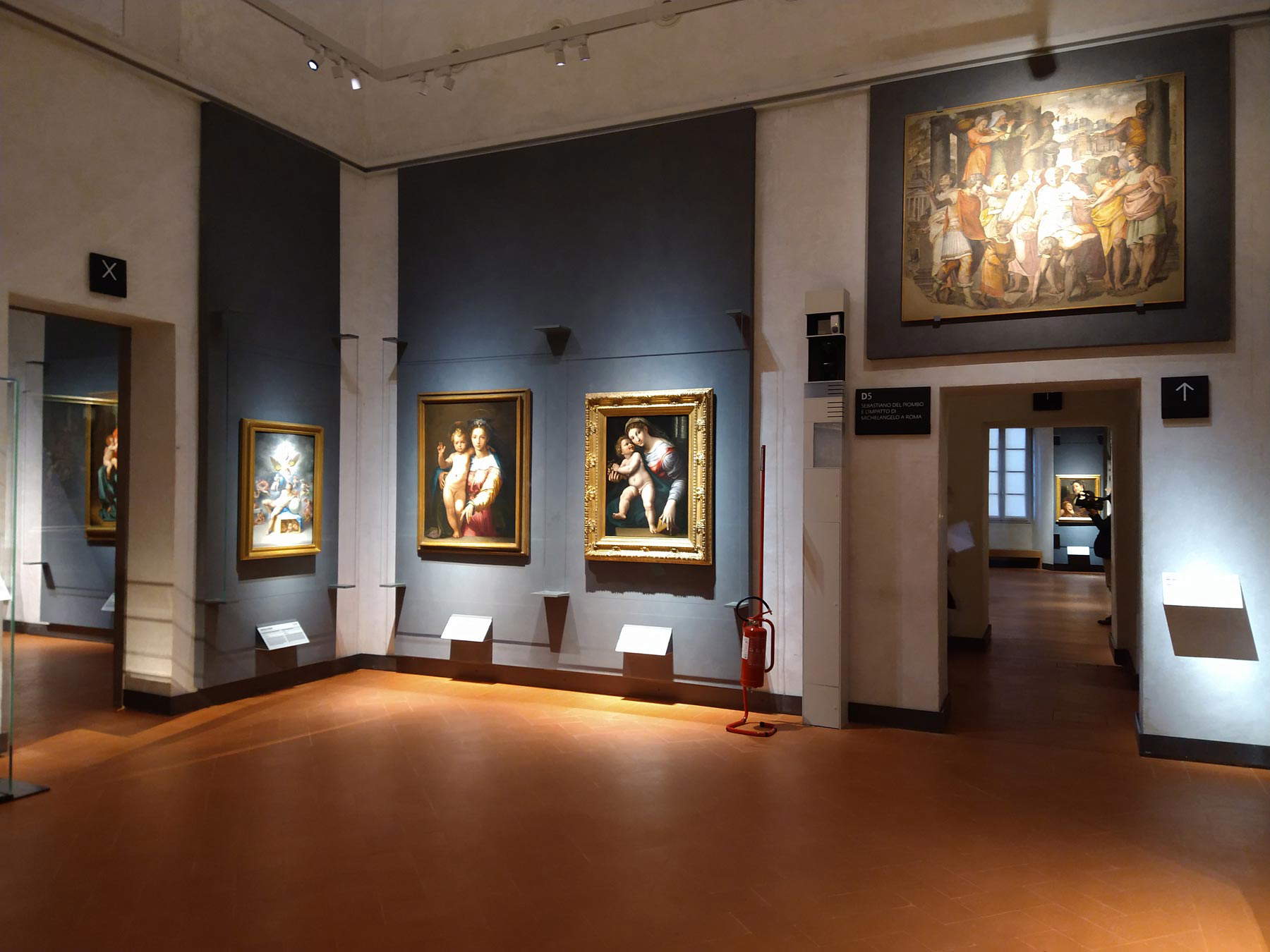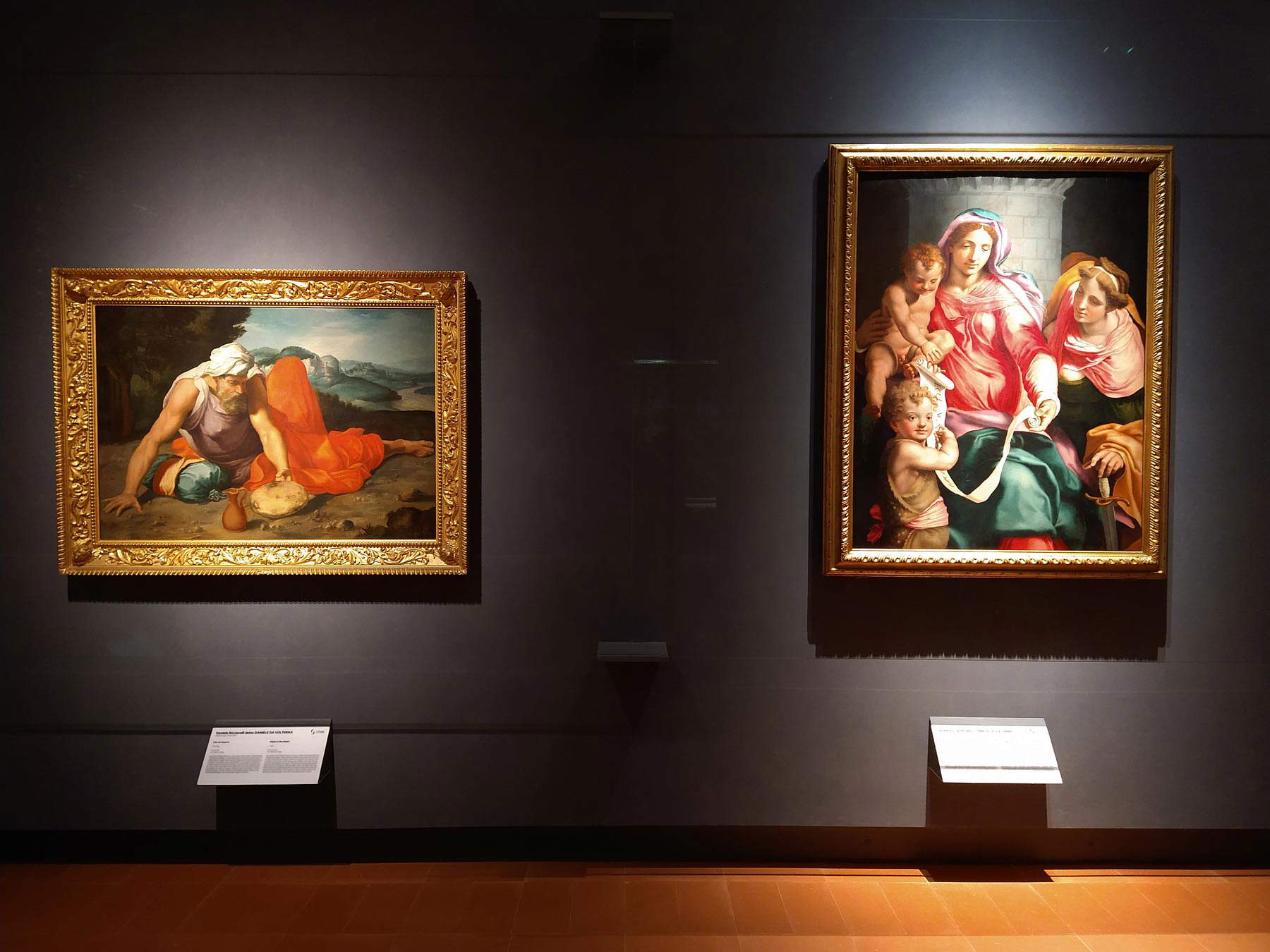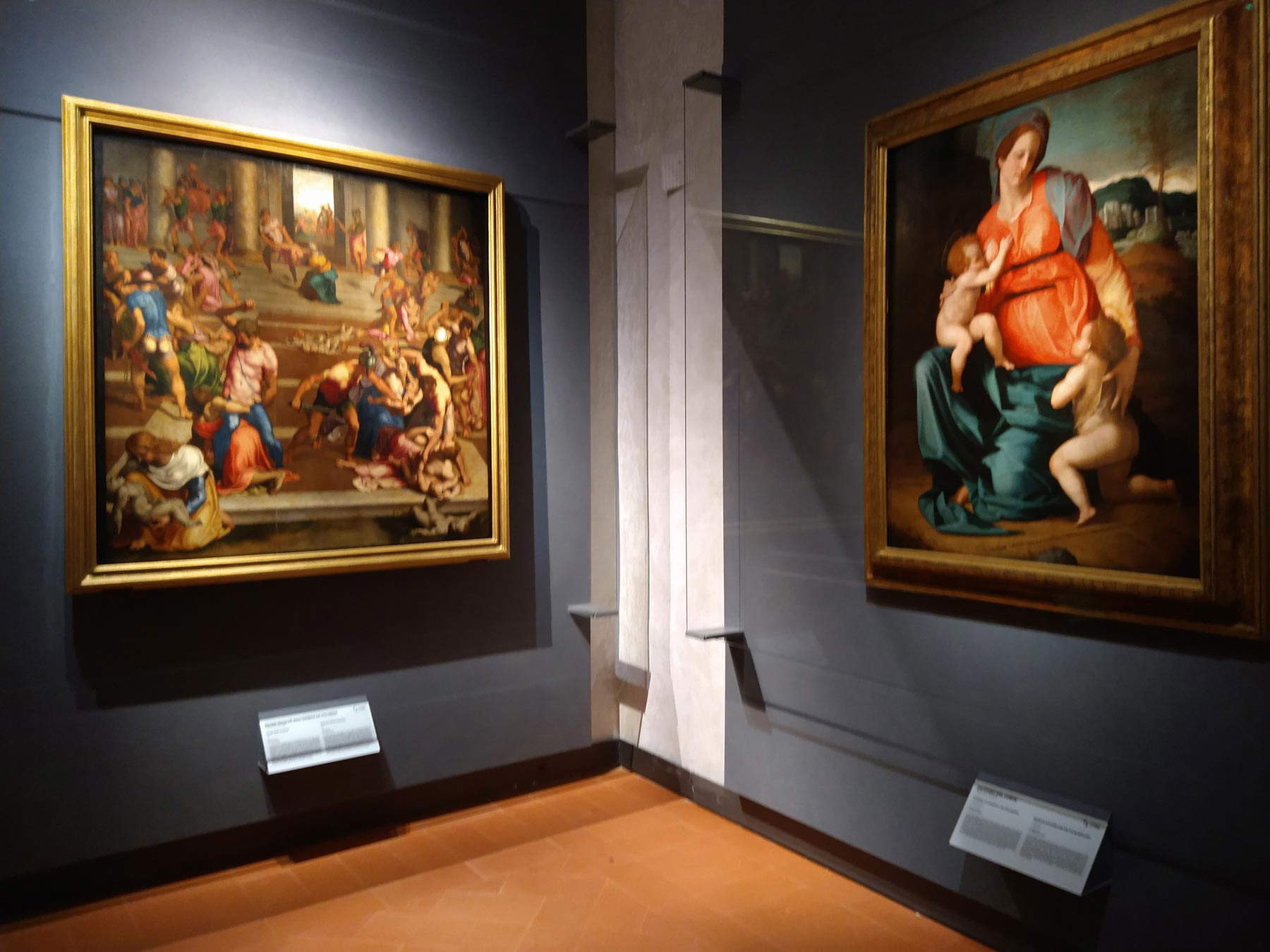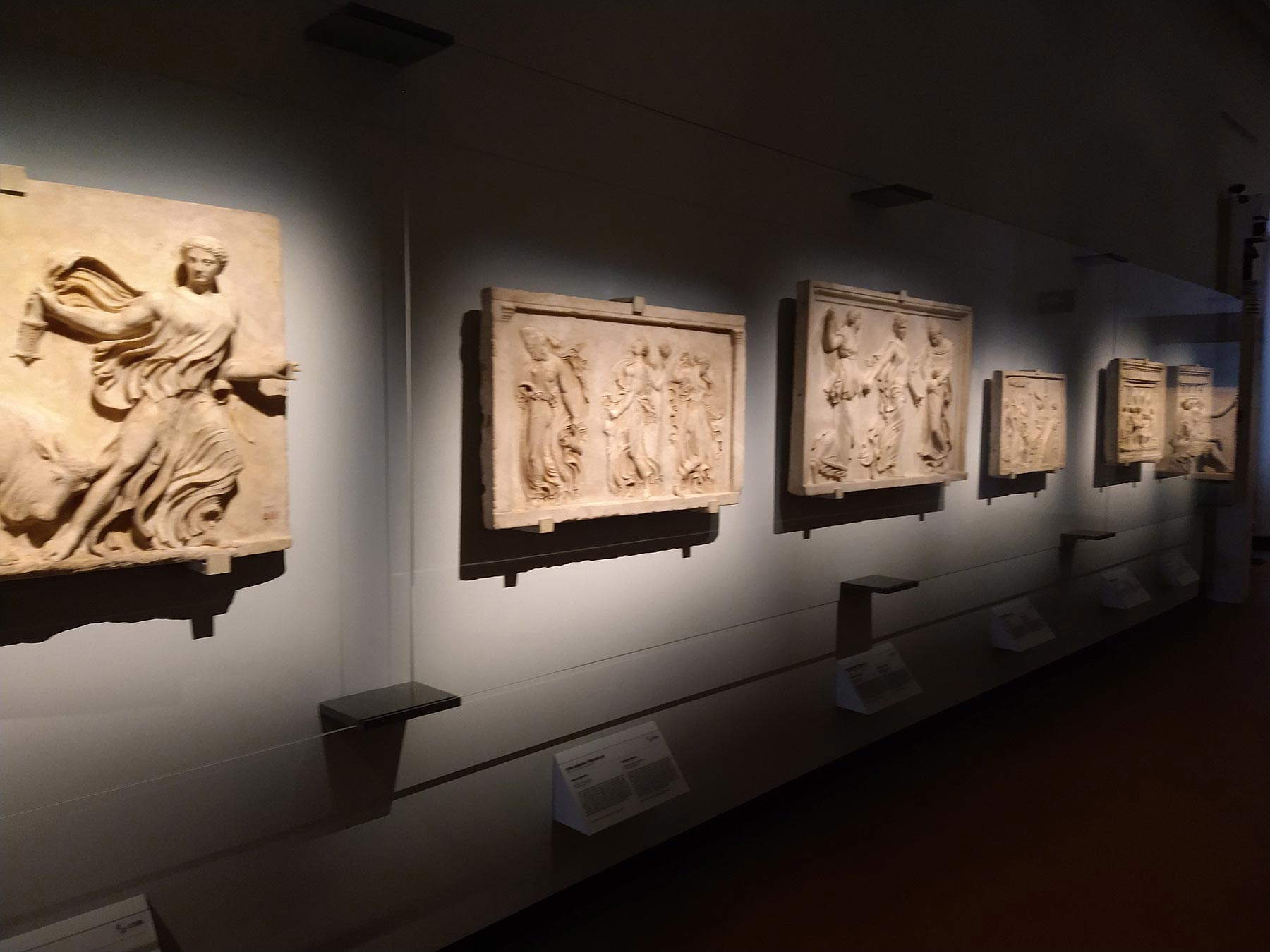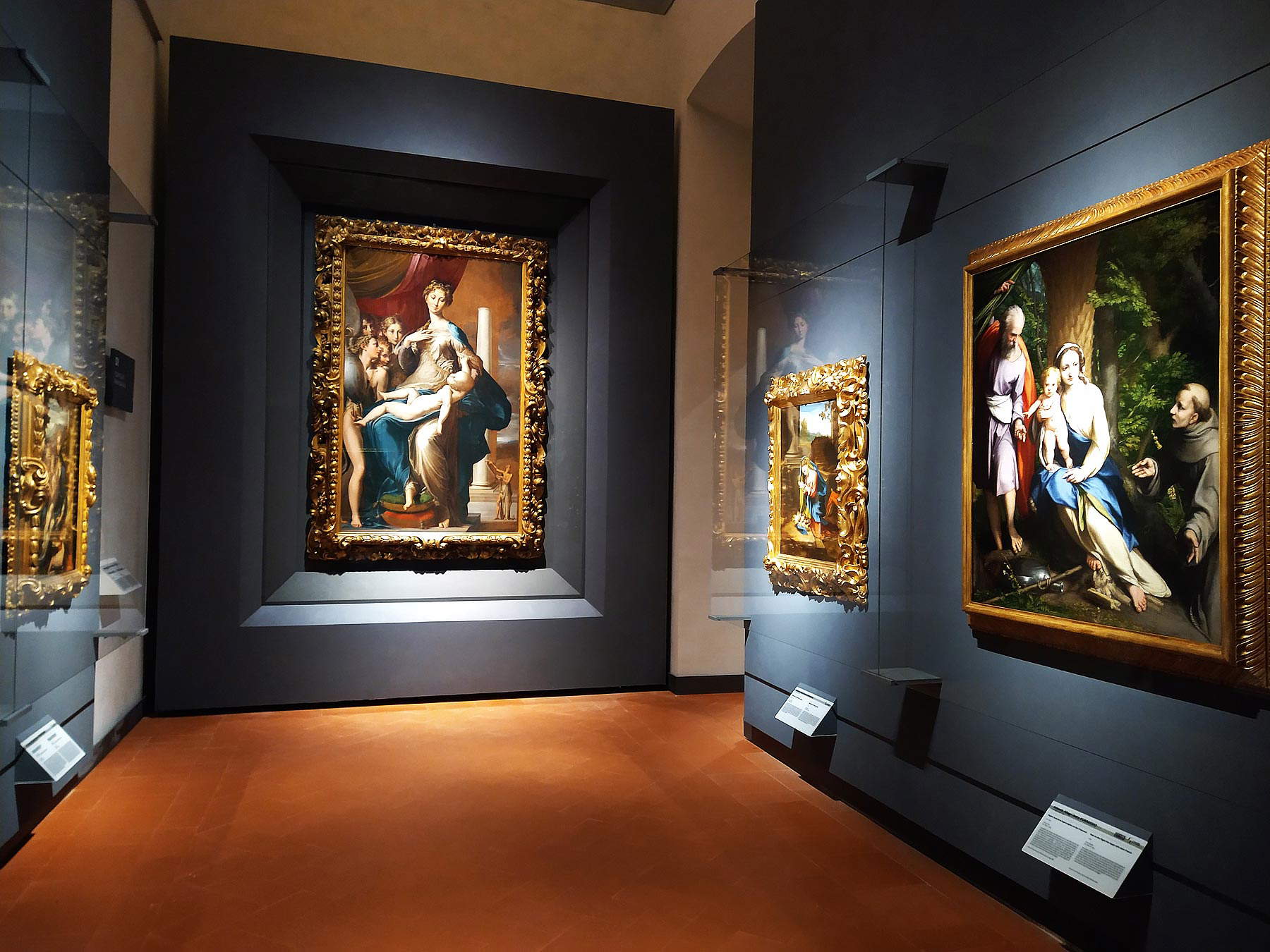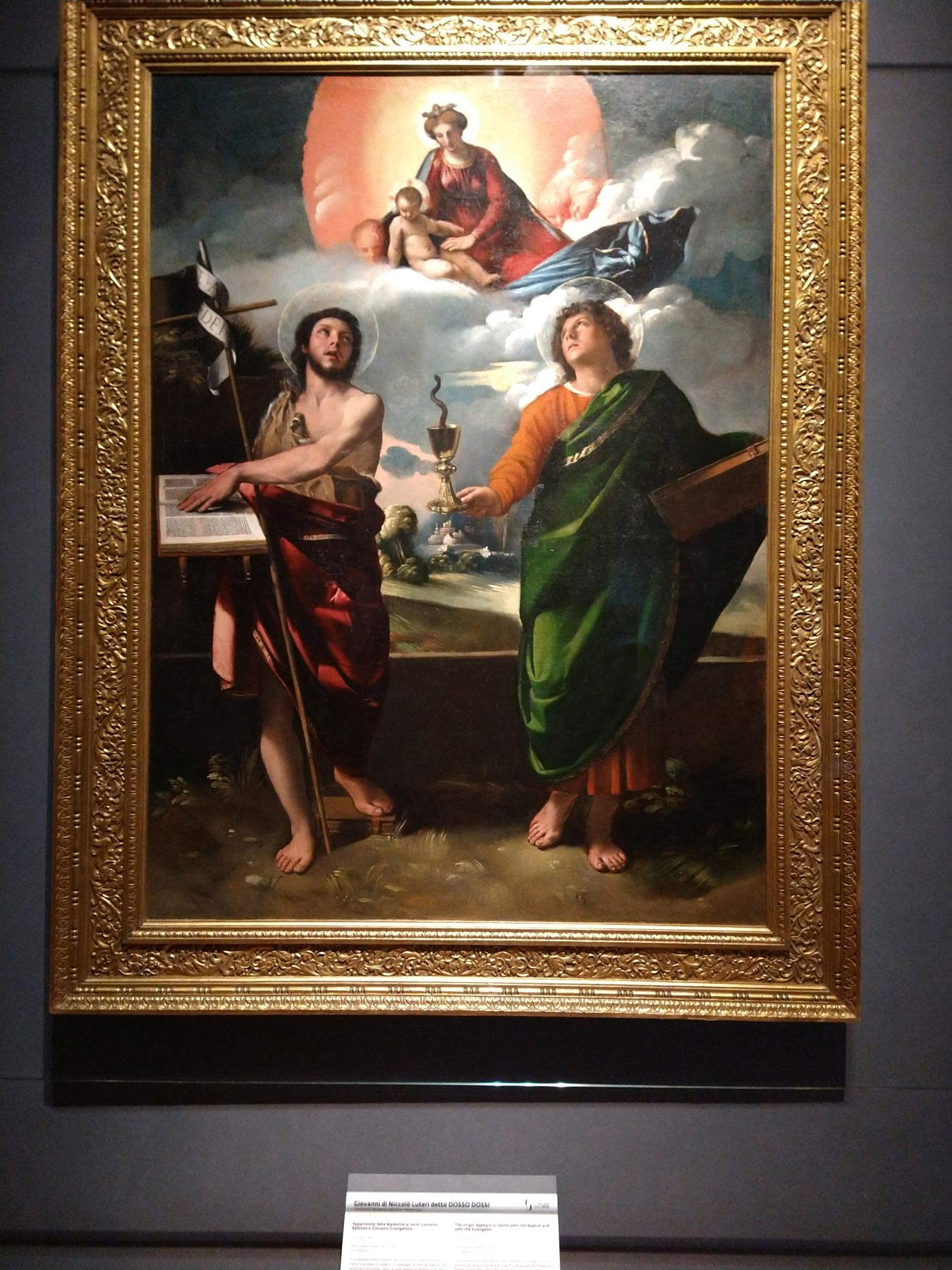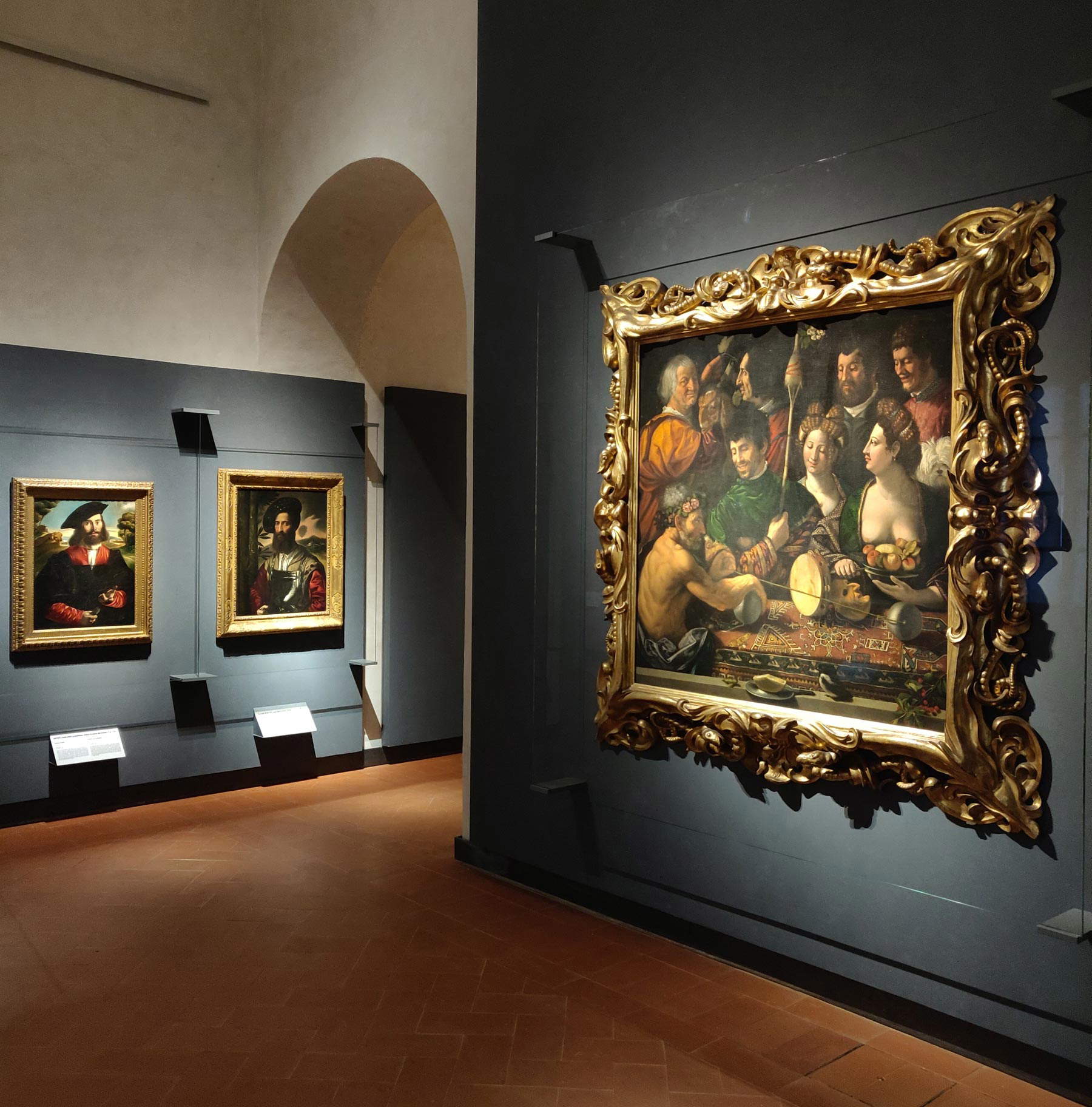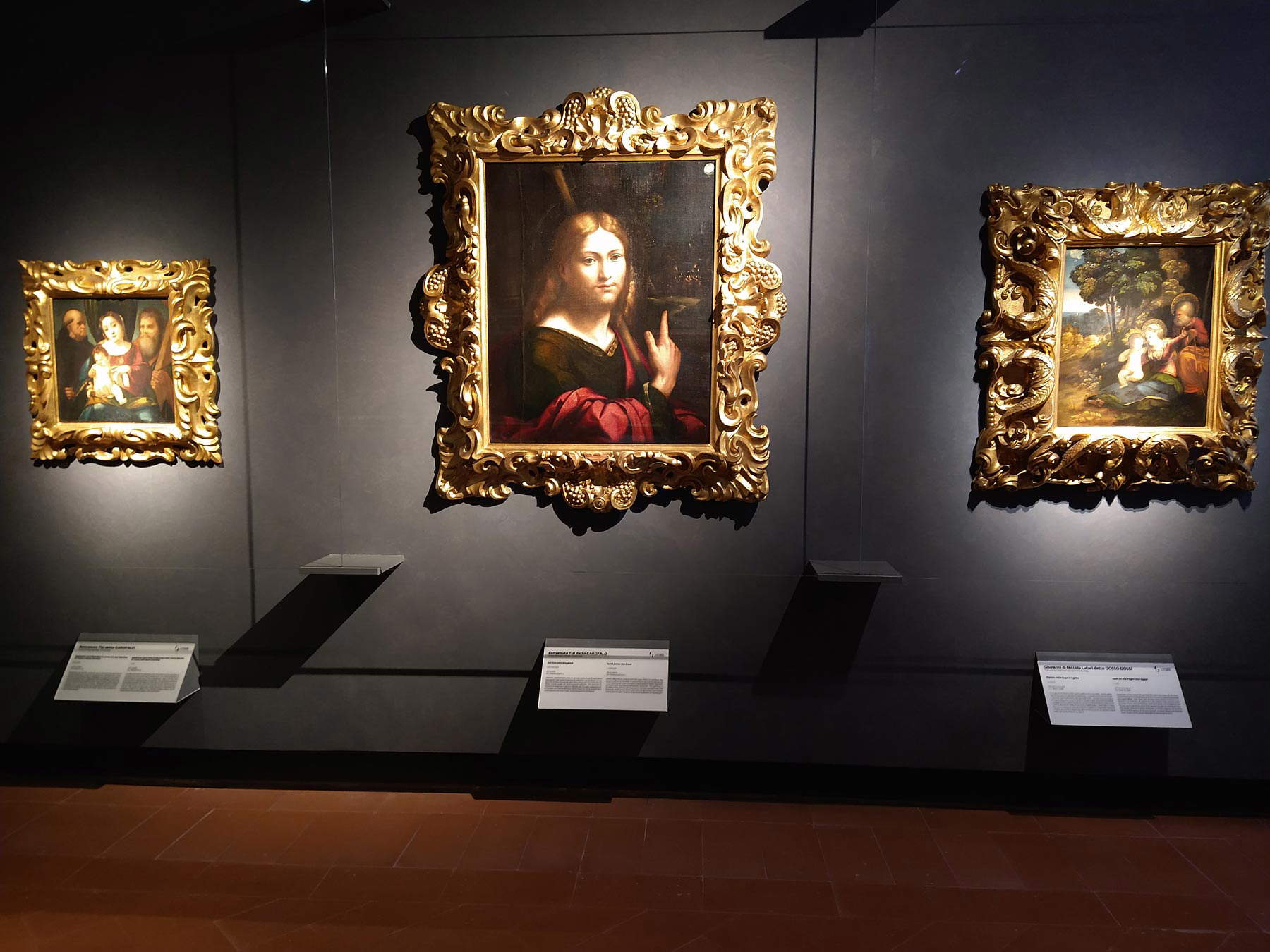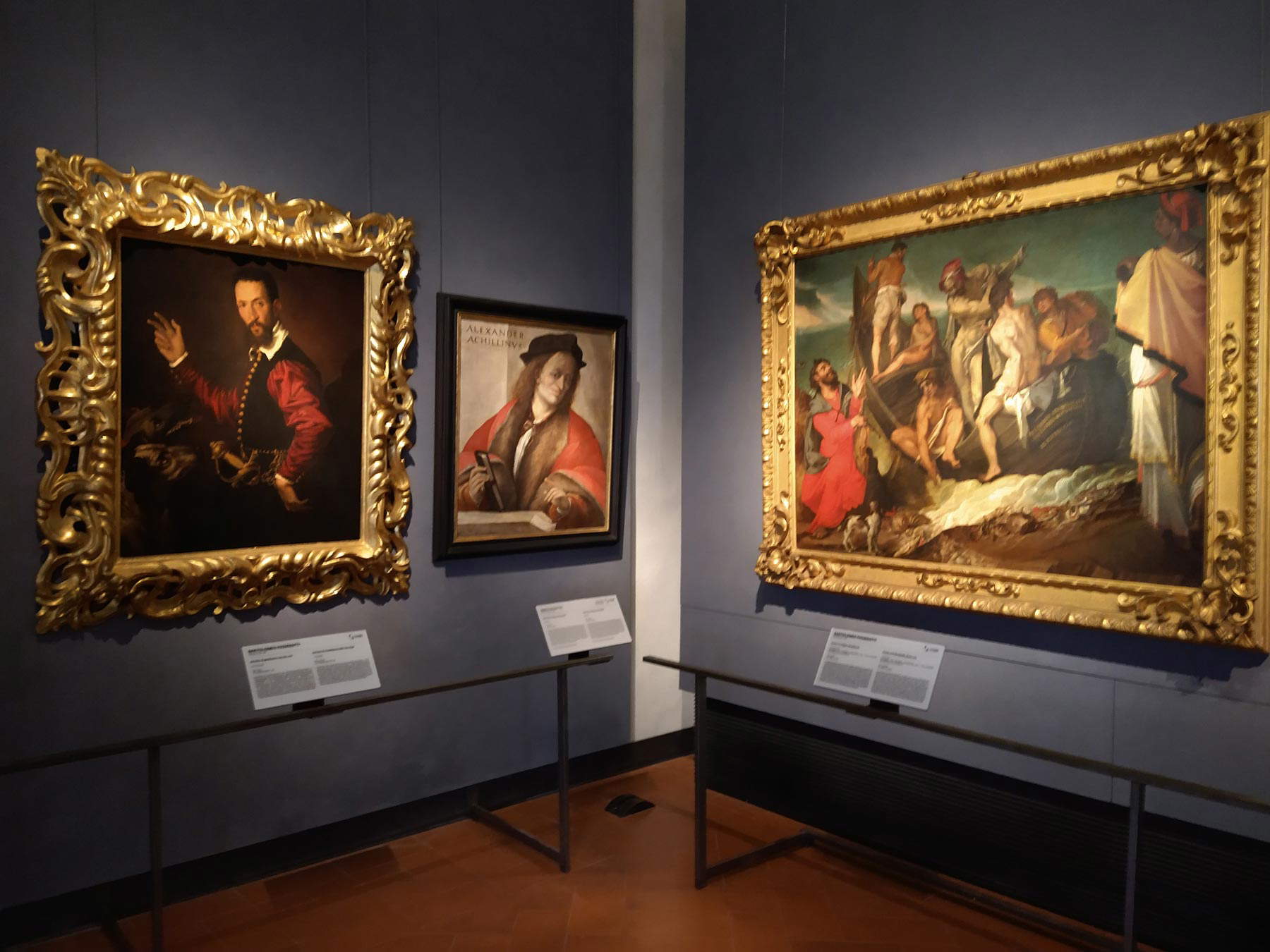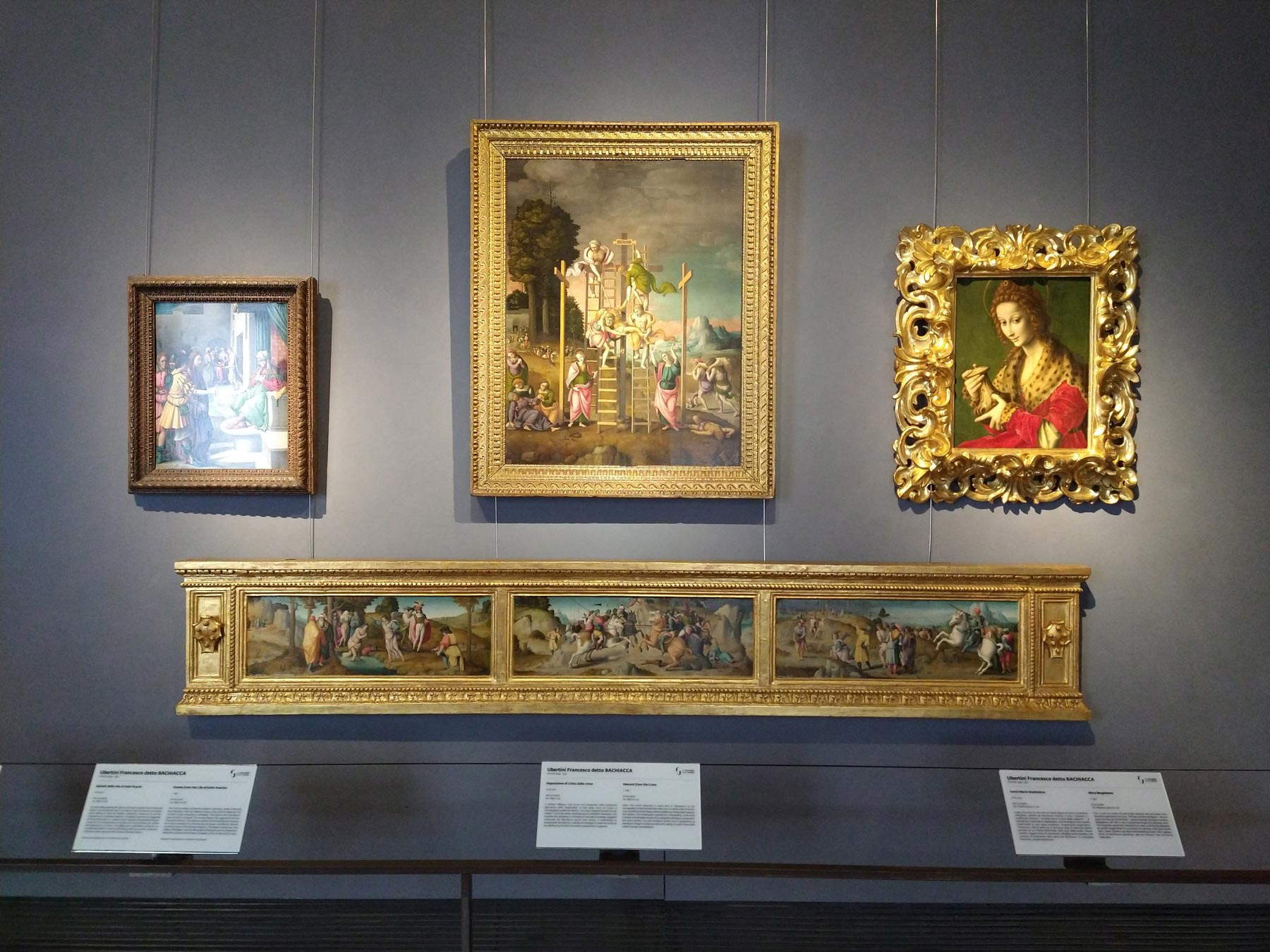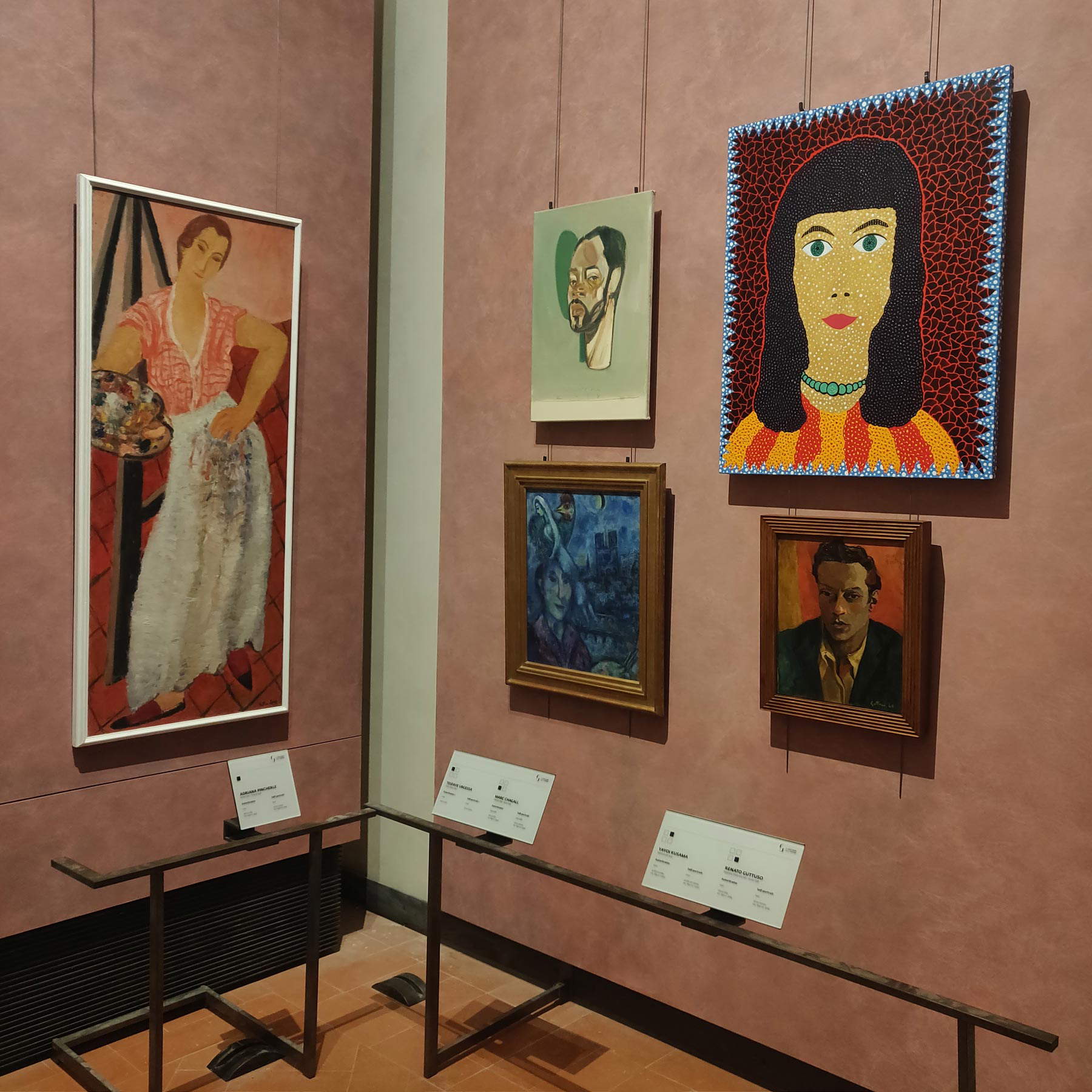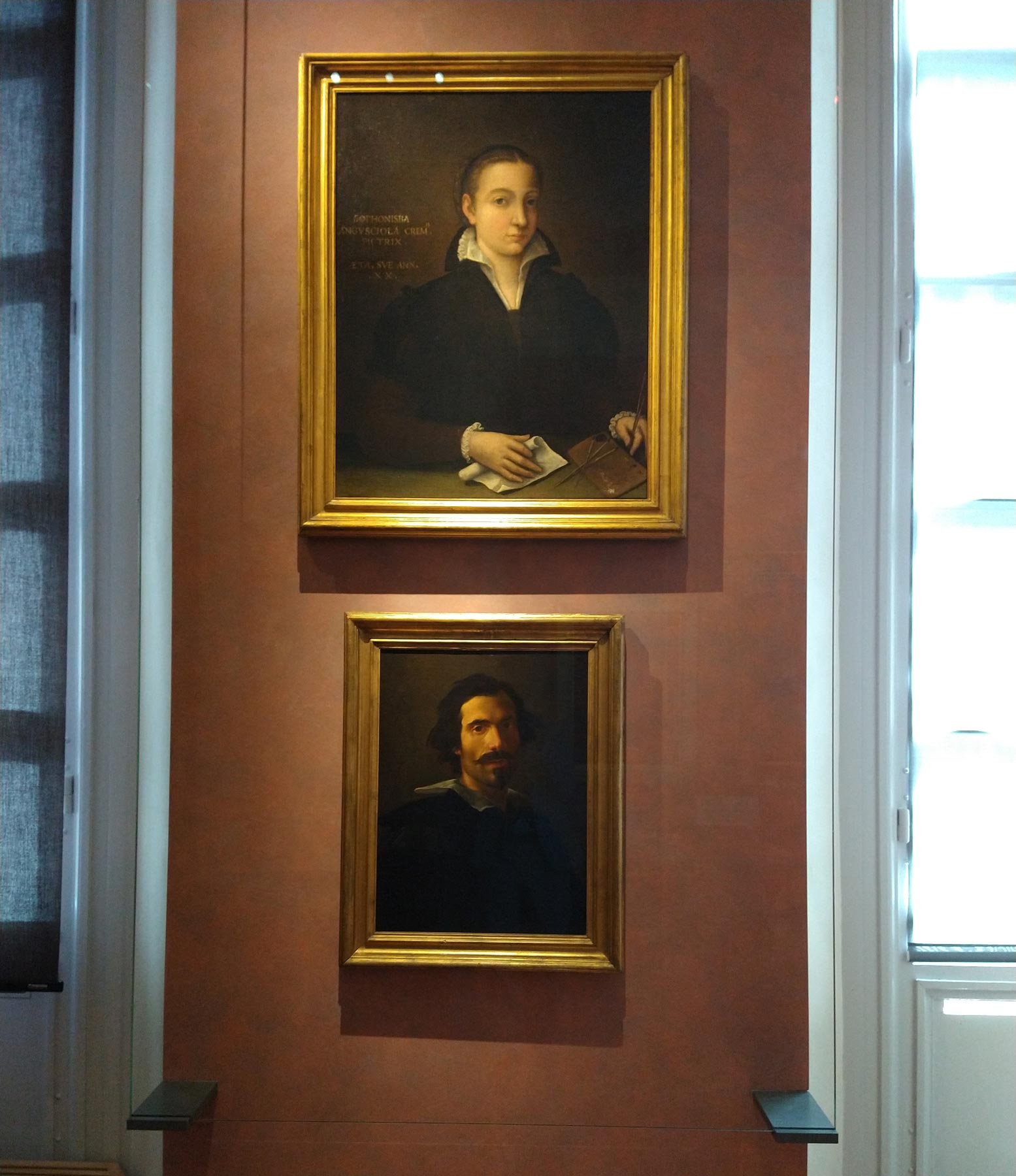by Redazione , published on 03/05/2021
Categories: News Focus
/ Disclaimer
The Uffizi reopens to the public tomorrow, May 4, and features 14 new rooms, displaying 129 works from 16th-century Tuscany and Emilia: from Pontormo to Parmigianino, Rosso Fiorentino to Correggio, Andrea del Sarto to Bartolomeo Passerotti.
The Uffizi’s new rooms, dedicated to 16th-century Tuscany and 16th-century Emilia, opened today: fourteen rooms will welcome the public for the first time tomorrow, with 129 works in a new layout. The new rooms display a number of historical masterpieces such as Andrea del Sarto’s Madonna of the Harpies, Parmigianino’s Madonna with a Long Neck, Rosso Fiorentino’s Pala dello Spedalingo, and Pontormo’s Supper at Emmaus, as well as new acquisitions, presented to the press and public in recent months. Among the latter are the Pannocchieschi d’Elci paintings by Daniele da Volterra (among the Uffizi’s most important purchases in recent years) and theEnigma of Homer by Bartolomeo Passerotti, the Florence museum’s latest acquisition (a work thought to have been lost for centuries). Alongside these paintings, works that had not previously found a permanent display enter the itinerary open to the public. Finally, also open is a preview of the new rooms of self-portraits, with works by artists such as Bernini, Cigoli, Chagall, and Guttuso.
The new rooms are located on the second floor and flank the corridor where the works have been displayed since 2011. Some found space in the vacated corridor rooms, others in the rooms that until now had been used for temporary exhibitions, and still others in newly opened rooms. With the opening of the new rooms tomorrow, May 4, 2021, the public will also experience for the first time the Florentine museum’s new route, with the new entrance prepared in the final weeks of the 2021 lockdown: visitors, descending from the second floor via the Buontalenti staircase or lascensore located between the Leonardo and Michelangelo-Raffaello rooms in the middle of the Corridoio di Ponente (thus, they will not pass as until now by the Lanzi staircase, accessible from the bottom of the same corridor), will arrive in the new rooms and from there continue their visit to the Venetian 16th-century rooms opened in 2019.
 |
| D1: the Plautilla Corridor |
 |
| D1: the Plautilla Corridor |
 |
| D2: Andrea del Sarto |
 |
| D3: Alonso Berruguete and Francesco Granacci |
 |
| D3: Alonso Berruguete and Francesco Granacci |
 |
| D4: Pontormo and Rosso Fiorentino |
 |
| D4: Pontormo and Rosso Fiorentino |
 |
| D4: Pontormo and Rosso Fiorentino |
 |
| D5: Sebastiano del Piombo and the Roman Cinquecento |
 |
| D5: Sebastiano del Piombo and the Roman Cinquecento |
The new path of the Florentine and Emilian sixteenth century
In the new rooms, the paintings are no longer displayed sequentially along the corridor line, but are arranged within communicating spaces designed to create visual directories, cross-comparisons, and correspondences. The works are protected by state-of-the-art, refraction-free glass: this technical innovation allows visitors to get within a few centimeters of the surface of the paintings and sculptures, without experiencing optical barriers or setting off annoying alarms.
The tour begins in the "Corridor of Plautilla N elli," where anAnnunciation by Plautilla Nelli (Florence, 1524 1588) and monochromes by Andrea del Sarto (Andrea d’Agnolo; Florence, 1486 - 1530) with female figures, musicians and warriors that the artist studied in Rome, where he may have gone in 1511, take place. One then enters, after admiring a marvelous Madonna and Child by Giuliano Bugiardini (Florence, 1476 - 1555), the room dedicated specifically to Andrea del Sarto: Masterpieces such as the Vallombrosa Altarpiece, the latter among the great Florentine artist’s most important late works, executed for the church of the Romitorio delle Celle di Vallombrosa, and depicting Saints Michael the Archangel, John Gualberto, John the Baptist and Bernard degli Uberti, as well as the Madonna of the Harpies, to which an entire wall is dedicated. A passageway leads into the third room, dedicated to Francesco Granacci and Alonso Berruguete (Paredes de Nava, c. 1488 - Toledo, 1561): welcoming the visitor, however, is the Visitation by Mariotto Albertinelli (Florence, 1474 - 1515), which acts as an ideal link with the previous room and has been rearranged to reconstruct its altarpiece arrangement. By Berruguete, the public will admire a Madonna and Child and a Salome with the Head of the Baptist, while by Granacci here are the paintings for the Borgherini room, long displayed in the past near Michelangelo’s Tondo Doni. We come from here to the fourth room, devoted to Pontormo (Jacopo Carucci; Pontorme di Empoli, 1494 - Florence, 1557) and Rosso Fiorentino (Giovanni Battista di Jacopo; Florence, 1495 - Fontainebleau, 1540): all the masterpieces of the latter have been collected here, from Pontormo’s Supper at Emmaus and Portrait of Maria Salviati to the Pala dello Spedalingo and Rosso’sAngioletto playing the lute. Also exhibited by the latter is Saint John the Baptist, part of Professor Carlo Del Bravo’s large bequest of 455 works, donated to the Uffizi in July 2020 (also selected, like the Daniele da Volterra two years earlier, among the Acquisitions of the Year by the British magazine Apollo).
The fifth room is dedicated to Sebastiano del Piombo (Venice, 1485 - Rome, 1547): new emphasis is given to the Death of Adonis, which can again be viewed at a height that allows every detail to be appreciated. As for the Roman sixteenth century, the audience will be able to understand through the room the reception of Michelangelo’s culture thanks mainly to the works of Battista Franco (Venice, c. 1510 - 1561), beginning with the Battle of Montemurlo, which contains numerous quotations from Michelangelo. We then come to the room of Daniele da Volterra (Daniele Ricciarelli; Volterra, 1509 - Rome, 1566), which continues the discourse begun in the previous room: in addition to d’Elci’s paintings, the public will also find works by Francesco Salviati (Francesco de’ Rossi; Florence, 1510 - Rome, 1563), such as the fundamental Charity, which the Florentine artist executed with the example of the Tondo Doni in mind. We then cross the new Marble Corridor, a space with muted hues, where in front of a long bench parade ancient reliefs, some of which have never been exhibited in recent decades. Prominent among them is the relief of Roman art from the late first century AD with the Seated Shepherd, also known as the Wayfarer. Past the corridor, four rooms are devoted to 16th-century Emilian art: we begin with the Correggio and Parmigianino room (the eighth in the new itinerary), where we are entertained by such masterpieces as Correggio’s Madonna in Adoration of the Child Jesus, the Madonna of St. Zachary and Parmigianino’s Madonna with a Long Neck (now on the back wall of a secluded and rather deep room: this installation, also made possible thanks to the contribution of the Friends of the Uffizi Galleries, was designed by architect Antonio Godoli). The ninth room, on the other hand, is that of the masterpieces of Dosso Dossi (Tramuschio?, c. 1487 - Ferrara, 1542) and followers, where Dosso’sAllegory of Hercules, theApparition of the Madonna to Saints John the Baptist and John the Evangelist as well as the Female Figure by the unknown artist known as the “Friend of Dosso” are housed. The rearrangement of Dosso’s paintings also resulted in a rearrangement of the red room where they were previously located, immediately before the section devoted to Caravaggio and the Caravaggesque painters. They were replaced by works of sixteenth-century Lombard and Lombard-Venetian painting: a luminous, Titianesque Supper at Emmaus recently attributed to Simone Peterzano, Caravaggio’s master, can now be admired there. We then come to a dressing room where paintings by Ferrara’s leading artists, such as Garofalo (Benvenuto Tisi; Canaro, 1476/1481 - Ferrara, 1559), Ludovico Mazzolino (Ferrara, c. 1480 - 1528/1530) and Scarsellino (Ippolito Scarsella; Ferrara, 1550/1551 - 1620), find their place. Emilia ends with the Hall of the Sixteenth Century in Bologna, where works by Francesco Francia (Francesco Raibolini; Bologna, c. 1450 - 1517) and other authors alternate, including Bartolomeo Passerotti (Bologna, 1529 - 1592), whose aforementioned Enigma of Homer is now on display in the permanent itinerary.
From here, we reach the 16th-century Tuscan room, with works by Bachiacca (Francesco Ubertini; Florence, 1494 - 1557) and Puligo (Domenico Ubaldini; Florence, 1492 - 1527), the Bronzino room and the “Dynasties” room, where numerous Medici portraits are on display, including Bronzino’s celebrated portrait of Eleonora di Toledo. From here the journey then continues to the 16th-century Veneto and then to the 17th century. The corridors that also housed large altarpieces in the previous layout will host the collection of self-portraits, which were moved to the Vasari Corridor in 1973 but originally stood in the Uffizi. It is in these very rooms that a rearrangement of the collection begun in the seventeenth century by Cardinal Leopold is planned later this year. To announce the beginning of the work, a room has been temporarily prepared that revolves around the statue of the Cardinal, a far-sighted and original collector, insatiable and very knowledgeable: his image sculpted in 1667 by the court artist Giovanni Battista Foggini dominates the room, surrounded by a selection of self-portraits that he himself had partly bought: there are those of Sofonisba Anguissola, Ludovico Cardi known as Cigoli, Bernini, and Carlo Dolci. And around it is a selection of other self-portraits, provisional, therefore chronologically varied (Angelica Kauffmann, Marc Chagall, Renato Guttuso, Adriana Pincherle, Yayoi Kusama, Tesfaye Urgessa, just to point out a few), evidence of an allarte contemporary attention to each of the members of the Medici family and Cardinal Leopold in particular, as well as to the Uffizi today. It is precisely Cardinal Leopold who is responsible for a large part of the Uffizi’s darte collection, and for the works that can be admired now during the visit.
 |
| D6: Daniele da Volterra and Francesco Salviati |
 |
| D6: Daniele da Volterra and Francesco Salviati |
 |
| D7: Corridor of the Marbles |
 |
| D8: Correggio and Parmigianino |
 |
| D8: Correggio and Parmigianino |
 |
| D9: Dosso Dossi and Companions |
 |
| D9: Dosso Dossi and Companions |
 |
| D10: The sixteenth century in Ferrara |
 |
| D11: The Sixteenth Century in Bologna |
 |
| D12: Bacchiacca - The Florentine Portrait |
 |
| Anticipation rooms self-portraits |
 |
| Anticipation rooms self-portraits |
The statements
“All of us on the staff of the Uffizi,” declares director
Eike D. Schmidt, “have carefully prepared this reopening, which we can well describe as triumphant, and which will surprise the public with a series of hitherto unseen masterpieces and others well known, but displayed in such a way as to rediscover them in their deepest meaning. From this selection emerges a new image of Medici collecting, from the beginning open to all of Italy and beyond: the Uffizi becomes an open window on a vast and surprising artistic panorama. The Friends of the Uffizi Galleries have once again shown their love for the museum by generously funding the installation of the Parmigianino room.”
“We are truly delighted with today’s presentation of the new rooms and in particular that of Parmigianino’s extraordinary oil painting, the Madonna dal Collo Lungo,” says Maria Vittoria Rimbotti Colonna, president of the Friends of the Uffizi and Friends of the Uffizi Galleries. “Just as has already happened with those of Michelangelo and Leonardo, we are happy that these rooms can be returned to the community thanks also to our contribution.”
Warning: the translation into English of the original Italian article was created using automatic tools.
We undertake to review all articles, but we do not guarantee the total absence of inaccuracies in the translation due to the program. You can
find the original by clicking on the ITA button. If you find any mistake,please contact us.
